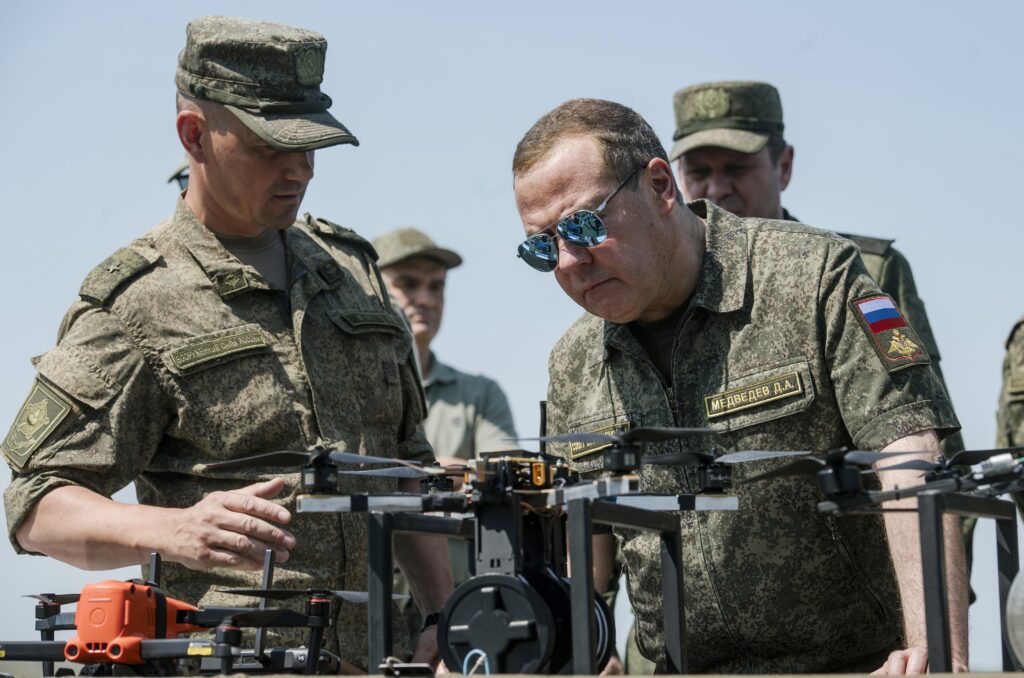Social restrictions due to the COVID-19 pandemic have had a strong impact on the lifestyles of many Russians. Working from home; communicating via messenger applications and video-conferencing platforms; ordering goods for everyday use online; conducting financial operations via mobile applications. These are just a few examples of day-to-day tasks now carried out with digital technologies. Research on digital literacy can be used to assess how effective the use of such technologies has been.
Internet vs TV
In 1922, Lenin advised Lunacharsky that, ‘For us, film is the most important of the arts’. The leader of the world proletariat focused on the propaganda potential of cinema. In a country with vast territory, most of the population were illiterate: newspapers and magazines were beyond their reach. The authorities were able to communicate with each citizen directly through the language of cinema.
For today’s Russian state, television has become ‘the most important of the arts’. This is seen, in particular, by a large-scale project to digitise the television broadcasting system. According to the Russian Television and Radio Broadcasting Network, a decade-long transition to digital broadcasting needed an investment of RUB 1,582 per household — tens of billions of roubles. The situation is changing, however; symbolic power is gradually being transferred to media that, through inertia, are still being called new.
To begin with, the scope of TV consumption is decreasing in all gender and age groups. The small-screen audience is aging (Table 1). By contrast, the Internet audience is growing by about 4% annually, reaching 96.7mn viewers (79%) in 2019.

Secondly, although online sources cannot compete with television in terms of public confidence, the figures are gradually converging. According to the Levada Centre’s January poll, 52% of Russians trust television, 24% – online media, 21% – social media, and 4% – Telegram channels. By comparison, in August 2009, 79% trusted television, 7% – online media, and 4% – social media (Telegram channels did not exist at the time).
Thirdly, online media have already won the competition for advertisers; in 2018, spending on online advertisements exceeded that of television for the first time. The trend persisted in 2019. According to expert estimates by the Association of Communication Agencies of Russia, the amount of money spent on TV commercials amounted to RUB 175bn (down 6% compared to 2018), while the amount spent on online advertisements reached RUB 244bn (up 20%).
Thus, the Internet is ahead of television in terms of advertising, although it still lags behind as a tool of political communication for mass audiences. Still, current trends indicate that the victory of the worldwide web is just round the corner. For that to happen, a certain level of digital literacy must be achieved among the population.
Digital literacy: Russia’s path
Digital literacy has been actively discussed since the second half of the 1990s. Paul Gilster published his book Digital Literacy in 1997, a year after the publication of Don Tapscott’s well-known work The Digital Economy. The proximity of these two dates is no accident. Tapscott is primarily interested in challenges facing global corporations implementing digital technologies, while Gilster focuses on one aspect of innovation, namely new competencies. The latter reasonably argues that remote working differs from other forms of IT activities and therefore requires special skills. Digital literacy can be placed alongside similar but not synonymous concepts: media literacy, information literacy, computer literacy etc.
In Russia, the digital economy became a public issue in 2016, when the President called for its development in his annual address to the Federal Assembly. Digital literacy was studied in the country earlier, too. For example, several studies by Galina Soldatova are noteworthy. She introduced a model for the digital competence of adolescents and their parents. Elements of digital literacy are part of the Programme for the International Assessment of Adult Competencies (PIAAC). The National Research University – Higher School of Economics (HSE) in Moscow participates in the PIAAC on behalf of Russia. Moreover, in 2015, the HSE and the Centre for Internet Technologies (ROCIT), a regional public organisation, presented the Digital Literacy Index for Russia’s regions. As part of ROCIT’s research, one of the project participants, HSE professor Alexander Sharikov, proposed a four-component digital literacy model which significantly affected the interpretation of the concept. The model is based on two binary oppositions: ‘capabilities – threats’ and ‘technical-technological – socio-humanitarian’. Four quadrants are formed at the intersection of these two axes: semantic-communication capabilities, technical-technological capabilities, socio-psychological threats and technical-technological threats. An individual analytical approach is applied to each quadrant.
The Digital Literacy Index was last measured in 2018, when a decline was recorded compared to 2015. This does not mean that the level of digital literacy level fell, since the index is not absolute but relative. The main thing here is the ratio between different constituent elements of the index. As shown in Figure 1, there was a sharp decline in the digital security sub-index, which means that this segment developed much more slowly than digital consumption and individual digital competencies.

Since the problem of digital security appears relevant, we will focus on it in more detail by analysing the ROCIT/HSE Digital Literacy Index studied in December 2018. It is noteworthy that the fieldwork for this nationwide representative survey was conducted by ZIRCON, a research company.
Fear and hatred in the digital environment
Alongside IT security, digital security is an issue that is discussed quite frequently. In 2007, ROCIT held its first Secure Internet Day, which turned into a Secure Runet Week the following year. This is a series of official events dedicated to Secure Internet Day in Russia. At the state level, security issues are discussed in various contexts: personal data protection, the fight against terrorism, digital sovereignty and ICT import substitution, etc.
However, individuals’ ideas about their own digital security are primarily based on personal experience and perceptions. As digital practices develop, personal experience is increasingly negative. On the one hand, Russians realise that their personal competencies concerning information protection and the safety of their activities in the digital environment have not changed significantly. On the other hand, vast evidence of the criminalisation of the digital environment (think of telephone bank fraud) has increased general anxiety.
The following paragraphs will cite some of the results of the above-mentioned survey by ROCIT/HSE/ZIRCON.
One of the markers of digital security are skills to protect the data of personal electronic devices (computers, tablets, smartphones) attacked by a virus. The most common behaviour pattern in such a situation is to reach out to professionals – this is what 43% of respondents would do. Twenty-one per cent would try to solve the problem with the help of people in their immediate circle – friends, relatives, acquaintances. Another 21% would try to solve the problem on their own. Of these, 8% believe they are professionals in this field; 13% do not consider themselves specialists, though they believe they have enough skills to work with IT. Finally, 8% of respondents say they would do nothing in such a situation; 6% found it difficult to answer the question.
Thirty-eight per cent fully or partially agree that they have the necessary skills to protect their personal information when using the Internet for work. Twenty-two percent hold the opposite view, while 19% selected an answer in between these two options. (It is noteworthy that 21% of respondents either refused to answer the question at all or did not answer it because they did not work online.)
Three in ten Russians (30%) are certain that a person can be surveilled via the Internet; they consider this threat very serious to them personally. Thirty-four percent disagree with this statement.
These and other indicators show that a considerable number of Russians do not perceive the digital environment as safe and friendly. Respondents are not always prepared to solve problems and threats on their own.
Russians’ key digital competencies
The existing level of digital skills among residents of Russia can be assessed based on a study carried out by VTsIOM and the Social Business Group (SBG) on 30 April 2020. The poll covers 17 digital competencies self-assessed by survey participants on a scale from 1 to 5. The representative telephone sample under the ‘VTsIOM-Satellite’ pilot project included 1,600 respondents aged 18 or above.
The survey showed that the most highly rated skills included taking pictures with a phone or other gadget; searching for information online; shooting a video with a phone, camera or other device; communicating or making calls through various messenger apps; and using e-mail. The lowest-rated skills included the ability to install and configure software, edit photos and images, prepare presentations and edit video material. At the same time, the average self-assessment score for digital competencies in terms of all parameters is higher among employed Russians compared to the average across the population total.

It is noteworthy that 66% of Russians assess their level of digital competencies as sufficient and 30% as insufficient (another 4% of respondents found it difficult to answer the question). Satisfaction with their level of digital competencies decreases with age (82% in the 18–24 age group and 48% in the 60+ age group). It should be noted that only 57% of the rural population reported being satisfied with their level of digital competencies.
Digital literacy and the COVID-19 pandemic
How useful are digital competencies under extreme pandemic conditions? The VTsIOM/SBG survey provided an answer to this question.
To begin with, it should be noted that 46% of Russians aged 18 or above are employed. In spring 2020, 16% switched to working from home: 9% on a full-time basis and 7% on a part-time basis. Another 2% of respondents were already working remotely prior to the pandemic. The working arrangements have not changed in the case of 27% of survey participants, who continue to perform their work duties on-site.
The percentage of those who switched to remote working is highest among specialists with higher education in the public sector (60%) and in the commercial sector (51%). In Moscow and St Petersburg, 29% of all adults work from home. The figure is 21% in cities of over 1 million (excluding the two above-mentioned metropolises) and only 10% in rural areas.
Survey participants have a rather negative view of working from home (61%, compared with 36% who rate it positively). The most common arguments against this form of work are as follows: ‘my work requires direct contact with people’, ‘lack of focus and concentration’, ‘it is impossible to fully immerse in work’ or ‘I’m fed up with sitting at home’. Arguments in favour of remote work include ‘no time is wasted on commuting’, ‘flexible schedule’, ‘more comfortable environment’ and ‘more spare time’.
Despite the generally negative emotional attitude to pandemic-related restrictions, Russians had enough digital competencies to adapt to changing conditions. In 81% of cases, no new skills were required to switch to working from home, whereas 19% had to upgrade their skills. In most cases, this was about learning how to use new software.
Digital literacy is undergoing a constant transformation, as both digital technologies and their application are changing rapidly. Russia is not among the leaders in terms of digital development; survey results show that the level of individuals’ digital competencies corresponds to the level of IT development in the country. The development of infrastructure, the availability of personal digital devices and experience using them have enabled citizens to adapt to conditions of self-isolation during the pandemic. At the same time, people are concerned about security in the digital environment.










